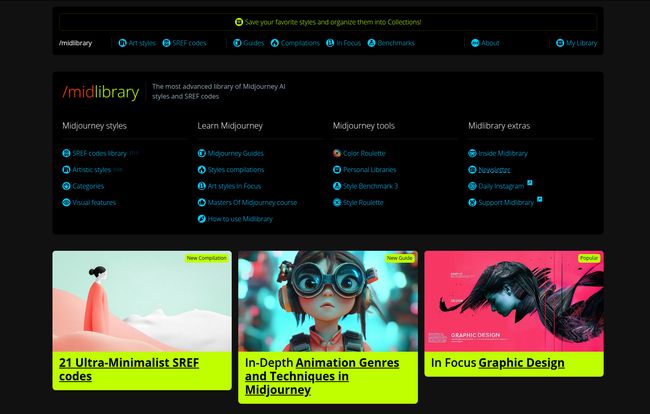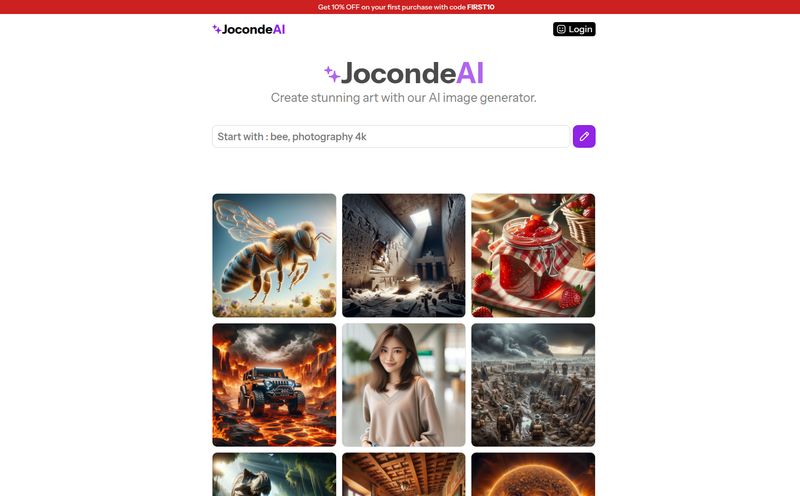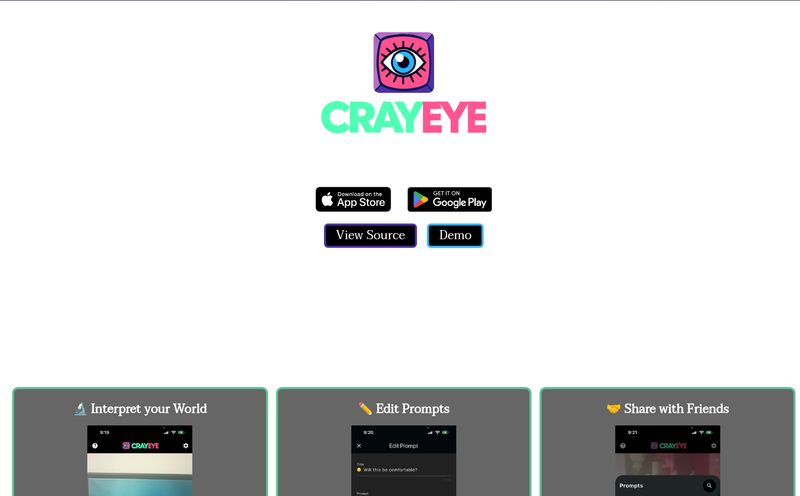We’ve all been there. Staring at the Discord command line, typing /imagine prompt: and then... nothing. You have this incredible image in your head, a specific vibe, a certain painterly quality, but you just can't find the right words to coax it out of Midjourney. You type "in the style of Van Gogh" for the seventeenth time, hoping this time it won’t look like a cheap filter. It's a grind. A creative slog.
For months, my workflow involved a chaotic mix of saved JPGs, a sprawling text file of prompts I liked, and way too much time spent scrolling through community feeds trying to reverse-engineer someone else's magic. It was messy. Then, I stumbled upon Midlibrary. And let me tell you, it wasn't just a discovery; it was a revelation. This thing has completely changed my AI art game.
It’s not just another website with a gallery of cool pictures. It's something much, much more.
What Exactly is Midlibrary? (And Why It’s Not Just Another Swipe File)
So what is this thing I'm gushing about? At its core, Midlibrary is an advanced, curated library of artistic styles and technical codes specifically for Midjourney AI. Think of it less like a gallery and more like an art historian, a prompt engineer, and a meticulous librarian all rolled into one incredibly useful, dark-mode-themed website. It’s not about just showing you what’s possible; it’s about giving you the exact tools and vocabulary to create it yourself.
This isn't your grandma's Pinterest board. It's a resource built for creators who are tired of guessing. It dives deep into the guts of Midjourney, cataloging everything from broad artistic movements to the nitty-gritty of the latest SREF codes for V6 and the specialized niji model. It’s the missing manual I always wished Midjourney came with.
The Core Features That Actually Matter
A tool can have a million features, but only a few usually make a real difference in your day-to-day. Midlibrary nails the important stuff.
The Endless Ocean of Artistic Styles
This is the heart of Midlibrary. The sheer volume of styles is staggering. It's like walking into a massive, interdimensional museum where every exhibit is a distinct aesthetic you can instantly apply to your own work. You can explore everything from 'Ultra-Minimalist SREF codes' to 'In-Depth Animation Genres' and 'Graphic Design'. The way they categorize and present everything is just... smart. You’re not just scrolling endlessly; you’re on a guided tour of artistic potential. I’ve lost hours just clicking through styles, not out of frustration, but pure fascination.

Visit Midlibrary
SREF Codes Finally Made Simple
If you’ve used Midjourney V6, you know that Style References, or SREFs, are a total game-changer for maintaining a consistent look and feel across multiple images. But managing them? A nightmare. Before Midlibrary, I had a text document littered with random SREF codes that looked like modem dial-up sounds. It was awful.
Midlibrary’s SREF Codes Library is, without exaggeration, a godsend. It’s an organized, searchable, and visually-previewed database of codes. You can see what a code does before you even bother copying it. This has saved me an unbelievable amount of time and fast-generation hours. It turns a clunky, technical feature into an intuitive, creative choice. Finally.
More Than Just Styles: The Guides and Tools
This is where Midlibrary goes from "great" to "indispensable." It’s not just a repository; it's an educational hub. They have comprehensive Midjourney Guides that cover topics like the best ways to upscale your AI art for printing or deep dives into specific techniques. I saw they even recommend a "Masters of Midjourney course," which shows they're tapped into the broader creator ecosystem.
And then there are the little bonus tools, like the Color Roulette, which helps you break out of color ruts by suggesting palettes. Or the Style Benchmark, a fantastic utility for comparing how different style prompts render the same subject. It’s these thoughtful additions that show the creators of this site really get the workflow of an AI artist.
A Walkthrough of My Midlibrary Workflow
Theory is nice, but how does it work in practice? Let me walk you through a typical project.
Last week, I needed to generate a series of images for a client's blog post about Japanese folklore. The vibe was supposed to be modern but inspired by traditional woodblock prints.
First, I hopped over to the Midlibrary 'Art styles' section. Instead of generic searches, I browsed through their compilations, quickly landing on a few styles that blended anime influences (for the modern touch) with more classic Japanese art. I found a style called "Ukiyo-e Illustration" that was almost perfect.
Next, I needed consistency. I jumped to the SREF codes library and searched for terms like "ink wash" and "woodblock." I found a code that gave everything a beautiful, slightly grainy paper texture. I saved that code to my clipboard.
Then, the magic happens. Midlibrary has a "My Library" feature. I bookmarked the Ukiyo-e style page and made a note of the SREF code right there. All my assets for the project were now in one place. No more switching between ten different browser tabs and a messy notepad file. The whole process, from vague idea to a concrete, actionable plan with styles and codes, took about 15 minutes instead of teh usual hour or two of frustrating experimentation.
The Good, The Bad, and The Honest Truth
Look, no tool is perfect. As much as I love Midlibrary, it’s important to have a clear picture of what it is and what it isn’t.
The good stuff is obvious. It's an incredible time-saver, a phenomenal source of inspiration, and the best organizational tool for Midjourney assets I've ever found. The fact that it's constantly updated with new styles and features for the latest Midjourney versions is a huge plus. It feels alive.
Now for the reality check. The biggest thing to remember is that Midlibrary is a companion, not a generator. It doesn’t create images. You absolutely need a paid Midjourney subscription to make any use of the resources here. Midlibrary is the brilliant navigator, but Midjourney is the car you have to pay for.
Also, while the site itself is super intuitive, the sheer number of options can be a bit overwhelming at first. It's a bit like being given the keys to a library with millions of books. It’s a great problem to have, but it can lead to some serious creative paralysis if you're not focused. Don't say I didn't warn you!
What About the Cost?
This is the best part. From what I can tell, using the Midlibrary website itself is completely free. There are no pricing pages, no subscription pop-ups, no feature gates. You can just go there and start exploring.
I did notice a "Support Midlibrary" button that links to a Patreon. This tells me it’s likely a passion project run by a small team or an individual who genuinely wants to help the community. And honestly, it makes me love it even more. It’s a tool built by users, for users. So while the platform is free, I'd certainly consider tossing a few bucks their way to keep this amazing resource going.
For me, Midlibrary has become an essential, non-negotiable part of my creative process. It bridges the gap between imagination and execution. It takes the technical frustration out of prompt crafting and puts the focus back where it should be: on the art. It’s turned Midjourney from a fun but sometimes unpredictable toy into a powerful, reliable creative instrument. If you're serious about creating high-quality AI art, do yourself a favor and go check it out. Your portfolio will thank you.
Frequently Asked Questions about Midlibrary
- Is Midlibrary free to use?
- Yes, the Midlibrary website and all its resources like the style and SREF libraries are free to access. They are supported by community donations via Patreon.
- Do I need a Midjourney account to use Midlibrary?
- While you can browse Midlibrary for free to get ideas, its resources (like SREF codes and style prompts) are meant to be used within Midjourney. So, to actually create images, you will need an active Midjourney subscription.
- What are SREF codes and why are they important?
- SREF stands for Style Reference. In Midjourney V6 and later, it's a powerful command that lets you apply a consistent artistic style across different images without needing a long, complex text prompt. Midlibrary's organized SREF library makes finding and using these codes incredibly easy.
- How often is Midlibrary updated with new styles?
- The platform appears to be updated very regularly. They are current with Midjourney V6.1 styles and consistently add new compilations, guides, and featured content, making it a very current resource.
- Can Midlibrary generate images for me?
- No. Midlibrary is a resource library, not an image generator. It provides the styles, codes, and guides to help you create better images using the Midjourney AI platform.
- Is Midlibrary useful for beginners?
- Absolutely. In fact, it might be even more useful for beginners. It provides a structured way to learn about different styles and prompt techniques, which can significantly shorten the learning curve of Midjourney.
Reference and Sources
- Midlibrary Homepage: https://www.midlibrary.io/
- Midjourney Official Site: https://www.midjourney.com/
- Midlibrary Guides Section: https://www.midlibrary.io/guides



